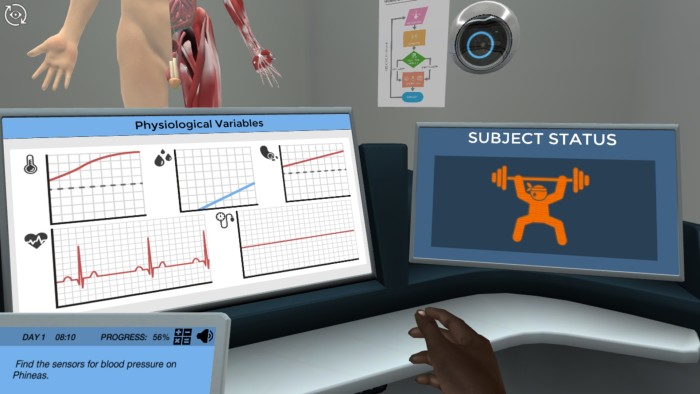
Living organisms have processes that allow them to counter potentially dangerous external or internal stimuli and maintain a delicate equilibrium for survival. This concept of always trying to return to a state of balance is called homeostasis.
Homeostasis is an important part of teaching biology and A&P. It’s not the easiest concept to grasp, so we’ve provided some ideas to aid you in teaching the subject. Since the idea doesn’t always stick with students, hopefully, some of these tips will be helpful.
The human body can be used to understand homeostasis. Two activities you can do with students involve exercise and temperature. In the first activity, students can test their heart rate while resting and after three minutes of exercise. In the second activity, students check their resting heart rate and then check their heart rate after they’ve submerged their faces in ice water for 30 seconds. There are lots of different hands-on activities you can offer your students!
Case studies are one way to actively teach homeostasis. With them, students are able to apply real-life scenarios to the topic and put it into context so they can understand. Questions that accompany case studies usually aren’t as straightforward as “yes” and “no,” so they allow students to think empirically. You can find many free ones online.
Virtual labs are a gamified way for students to go through a storyline in order to learn a specific topic. At Labster, we have two homeostasis virtual labs. One is Homeostatic Control: How does the human body keep itself in balance? Students will learn about the basic workflow behind the homeostatic process through the examples of body temperature, blood pressure, and blood sugar regulation. Virtual labs help students visualize concepts they may otherwise struggle to understand.

According to Variquest, “Visual aids help teachers establish, explain, connect, and associate ideas and concepts to make the process of learning more interesting, enjoyable, and effective.” Amoeba Sisters has some great videos on YouTube, one being about homeostasis. They even have accompanying worksheets on their website. Additionally, here’s a visual from Labster’s theory pages that shows the flow of homeostasis.

Teaching them about feedback loops may make homeostasis clearer to students. Negative feedback loops are those that serve to move a parameter closer to a state of homeostatic equilibrium. They are stabilizing processes triggered to readdress balance when a system deviates from a baseline state. Positive feedback loops are less common in humans and are those that create change and disrupt the balance in a body's system.
You’ll start to do this when doing hands-on activities and case studies with students, but you can dive even deeper into the mechanics of homeostasis inside the body as a real-life example. You can share with students that in order to manage nutrient intake, the body uses hormones to moderate energy stores. Pancreatic cells produce the two hormones called insulin and glucagon to regulate the blood glucose level. These two hormones work in synergy to maintain homeostatic glucose control. Hopefully this will give them a better grasp of how to apply homeostasis!


Labster helps universities and high schools enhance student success in STEM.
Request DemoRequest a demo to discover how Labster helps high schools and universities enhance student success.
Request Demo